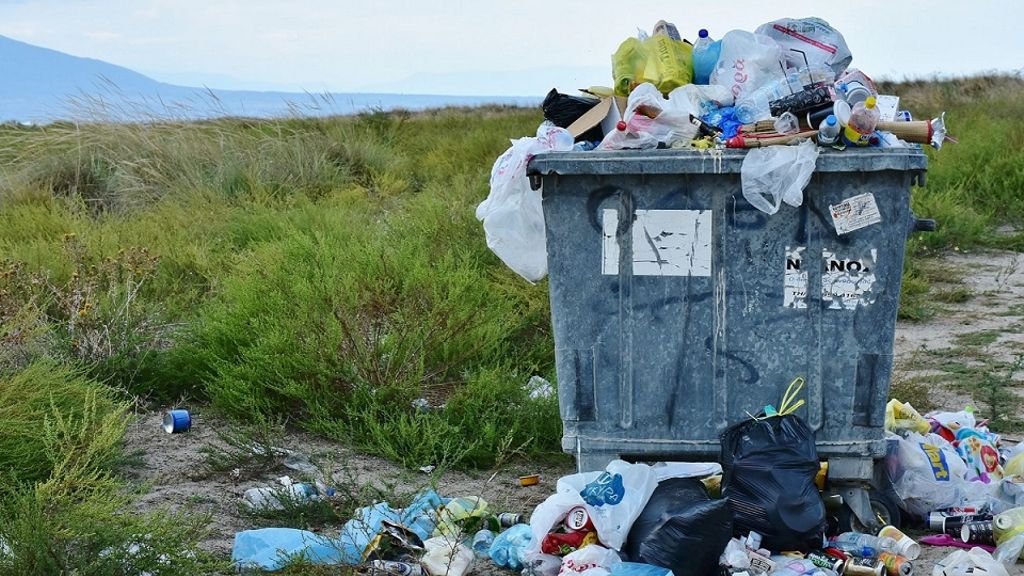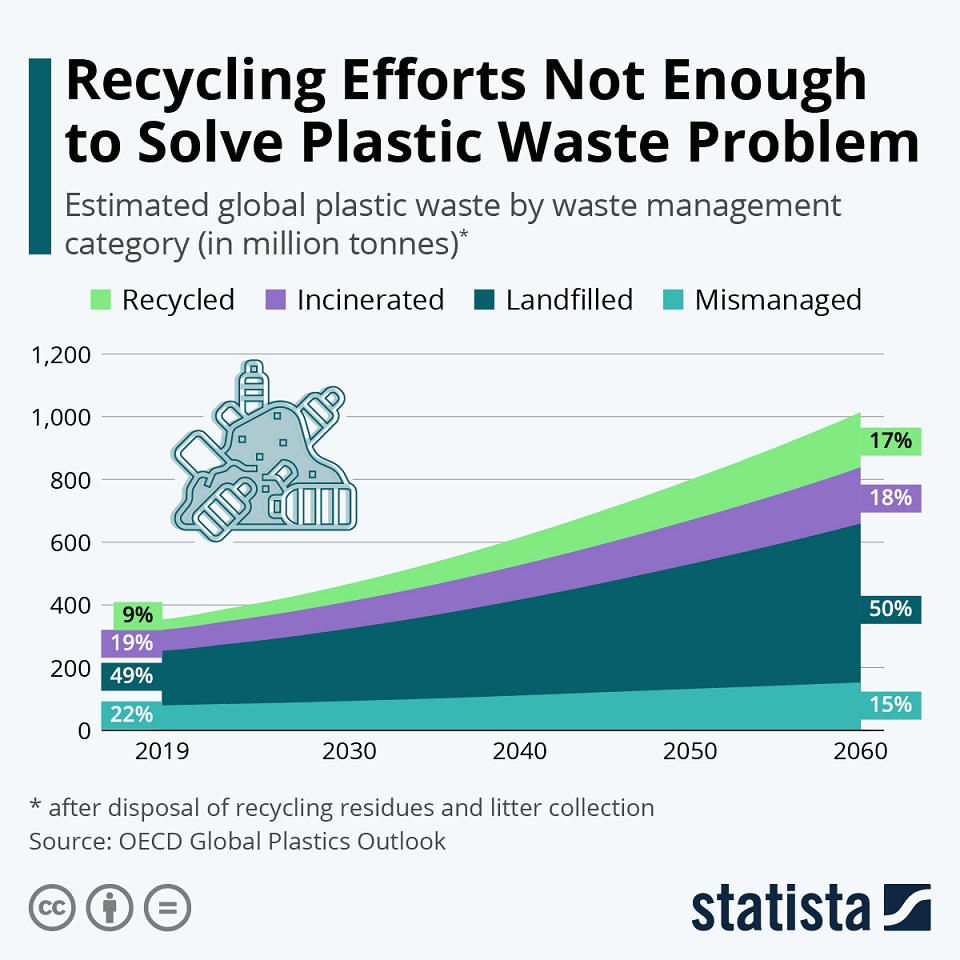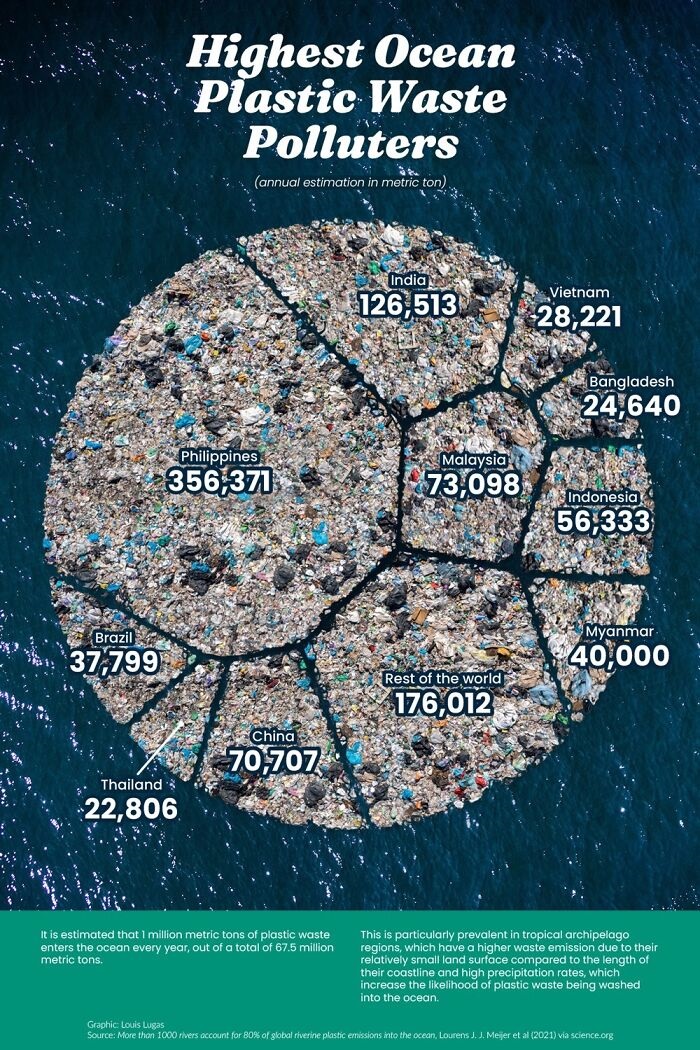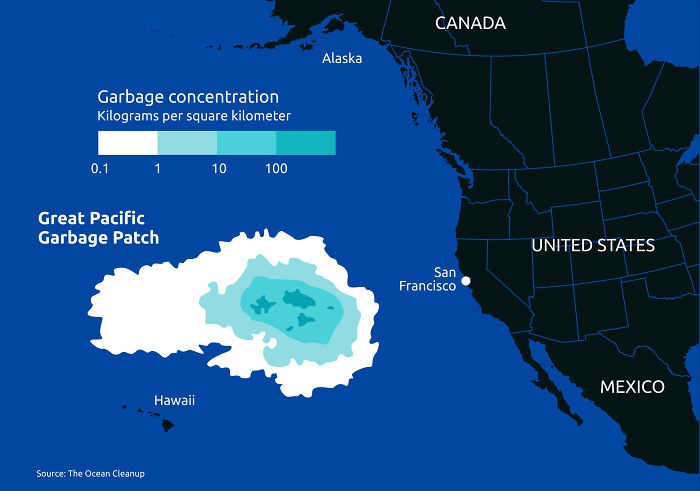The problem of global plastic garbage persists, and new technologies will be required to resolve, according to the latest forecasts by the OECD’s Global Plastics Outlook, rising from 353 million tonnes of waste in 2019 to 1 billion tonnes over the course of the next four decades. Two-thirds of this is expected to comprise packaging, consumer products, and textiles. Plastic waste from construction and transport will also be significant.
While population growth is one reason for the coming surge, another driver is economic growth. A bigger urban population means greater demands, production, and spending power. According to the World Bank, over 90% of waste is disposed of in unregulated dumps or openly burned in low-income countries. See this in the chart below and learn more here.
Some might think that the countries producing or consuming the most plastic are the ones that pollute the oceans the most. But that’s not true. A country with a smaller geographical area, longer coastlines, high rainfall, and poor waste management systems is likelier to wash plastics into the sea. See below the worst offenders by country and learn more here.
One example of what this plastic garbage problem can do is the Great Pacific Garbage Patch. It is the largest accumulation of ocean plastic in the world and is located between Hawaii and California. Scientists of The Ocean Cleanup have conducted the most extensive analysis ever of this area – learn more here and see a map of where this is located.
In any case, the problem of global plastic garbage persists, and new technologies will be required to resolve. In the comment section below, please give us your take on what you believe is needed to resolve.











